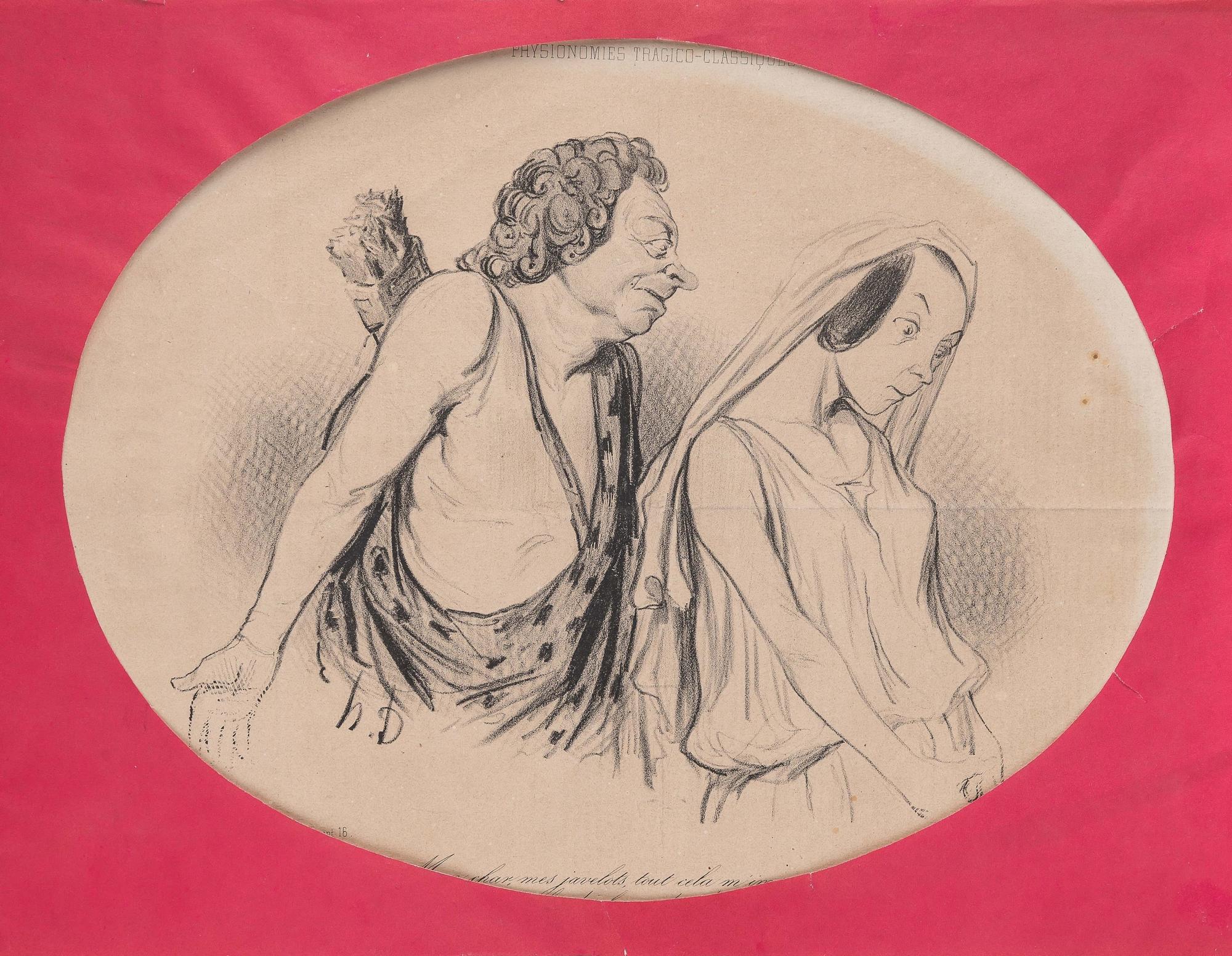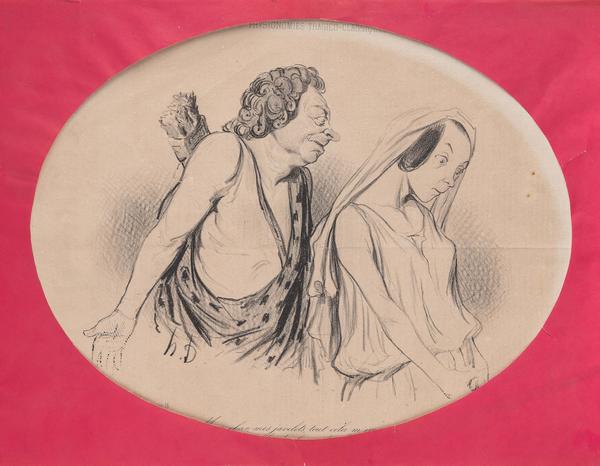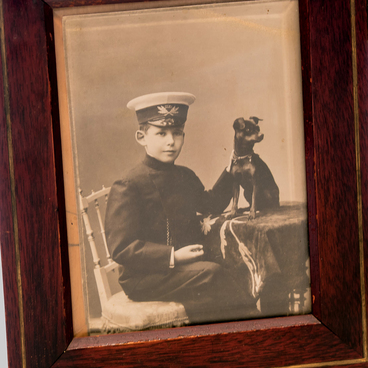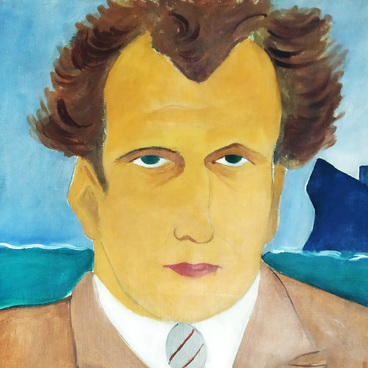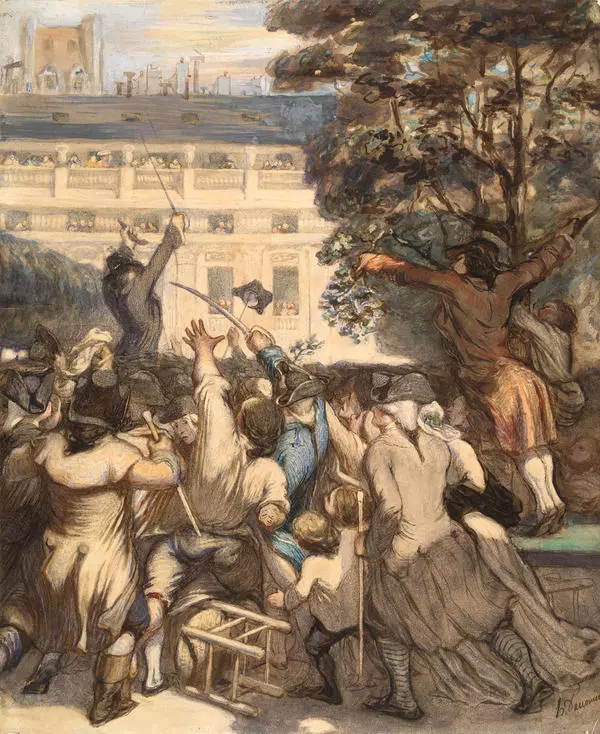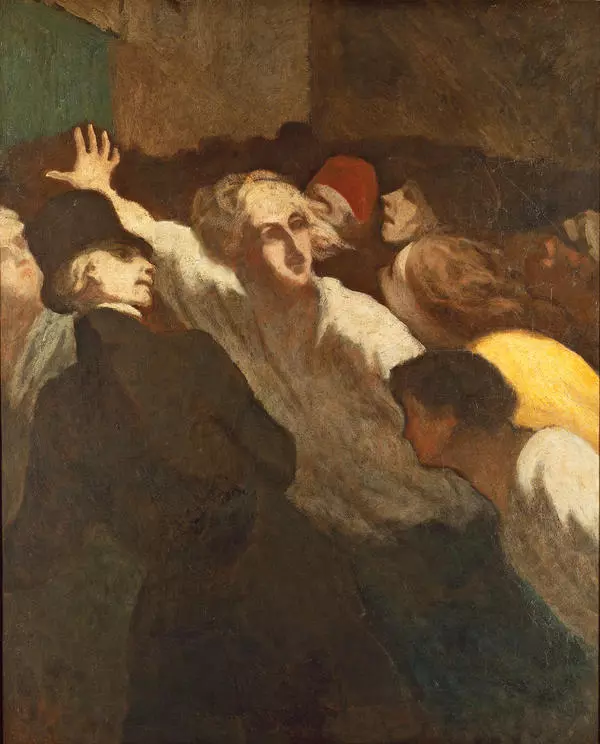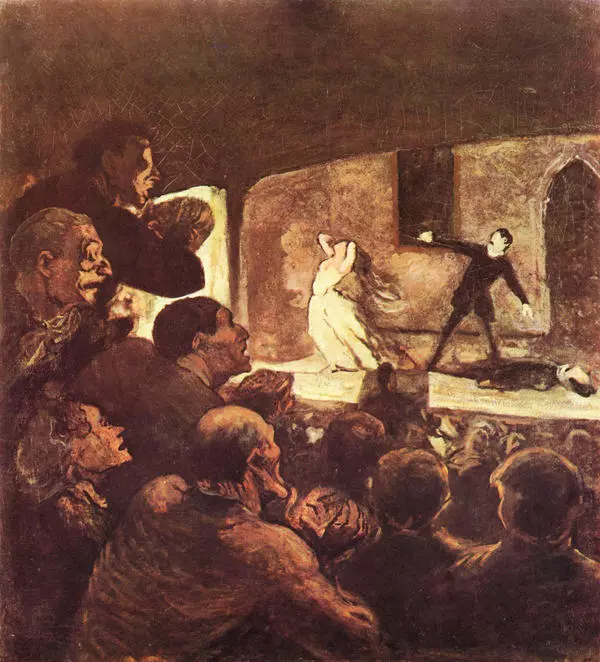Eisenstein had this print hung on one of the shelves in his library. The caricature by Honoré Domier was printed in the French illustrated newspaper CharivarI, dated November 15, 1841.
The full name of the engraving reads as: ‘Mon char, mes javelots, tout cela m’importune; Je ne me souviens plus des leçons de Neptune. (Phèdre)’ It translates as: “My chariot, my javelins, all of that troubles me; I no longer remember Neptune”s lessons. (Phèdre)” This Alexandrine verse is a quote from the tragedy Phèdre (1677) by the French playwright Jean RacIne. This piece is considered to be one of the finest examples of French classicism in poetry and theater. Its plot, inspired by the art of the ancient Greek playwright EurIpides, is built around the unrequited love of Queen Phèdre for her stepson Hippolyte, who loves his father’s prisoner, the Athenian princess ArIcie.
Jean Racine’s play was staged in the outdated manner of recitation at the Comédie-Française theater for a century and a half. It became a symbol of conservatism on stage and in life. In 1830, romanticists led by Victor Hugo, the author of the play Hernani, raised a riot against the domination of classical theater. Eleven years later, Daumier produced a caricature that ridiculed both the sublime style of Racine and the royal theater performances, but at the same time challenged the rampant passions in Hugo’s play. The artist captured Scene 2, Act 2 from Phèdre depicting Hippolyte’s confession of love to Aricie. Instead of a handsome antique young man, the artist portrayed Hippolyte as an aged, flabby, and gloomy man. ArIcie, too, was far from the ideal of ancient Greek beauty. Daumier brought the ancient myth and mundane modernity together with realistic boldness—not at all in favor of the bourgeois monarch epoch.
Such versatility of characters highly resonated with Eisenstein the director and Eisenstein the graphic artist. In his life, only his relatives, friends and associates knew that he was fond of drawing: he never printed or exhibited any of his graphics. His drawings from childhood are notable for a keen sense of humor, and many graphic cycles are built on a combination of mythological and modern themes.
The full name of the engraving reads as: ‘Mon char, mes javelots, tout cela m’importune; Je ne me souviens plus des leçons de Neptune. (Phèdre)’ It translates as: “My chariot, my javelins, all of that troubles me; I no longer remember Neptune”s lessons. (Phèdre)” This Alexandrine verse is a quote from the tragedy Phèdre (1677) by the French playwright Jean RacIne. This piece is considered to be one of the finest examples of French classicism in poetry and theater. Its plot, inspired by the art of the ancient Greek playwright EurIpides, is built around the unrequited love of Queen Phèdre for her stepson Hippolyte, who loves his father’s prisoner, the Athenian princess ArIcie.
Jean Racine’s play was staged in the outdated manner of recitation at the Comédie-Française theater for a century and a half. It became a symbol of conservatism on stage and in life. In 1830, romanticists led by Victor Hugo, the author of the play Hernani, raised a riot against the domination of classical theater. Eleven years later, Daumier produced a caricature that ridiculed both the sublime style of Racine and the royal theater performances, but at the same time challenged the rampant passions in Hugo’s play. The artist captured Scene 2, Act 2 from Phèdre depicting Hippolyte’s confession of love to Aricie. Instead of a handsome antique young man, the artist portrayed Hippolyte as an aged, flabby, and gloomy man. ArIcie, too, was far from the ideal of ancient Greek beauty. Daumier brought the ancient myth and mundane modernity together with realistic boldness—not at all in favor of the bourgeois monarch epoch.
Such versatility of characters highly resonated with Eisenstein the director and Eisenstein the graphic artist. In his life, only his relatives, friends and associates knew that he was fond of drawing: he never printed or exhibited any of his graphics. His drawings from childhood are notable for a keen sense of humor, and many graphic cycles are built on a combination of mythological and modern themes.
